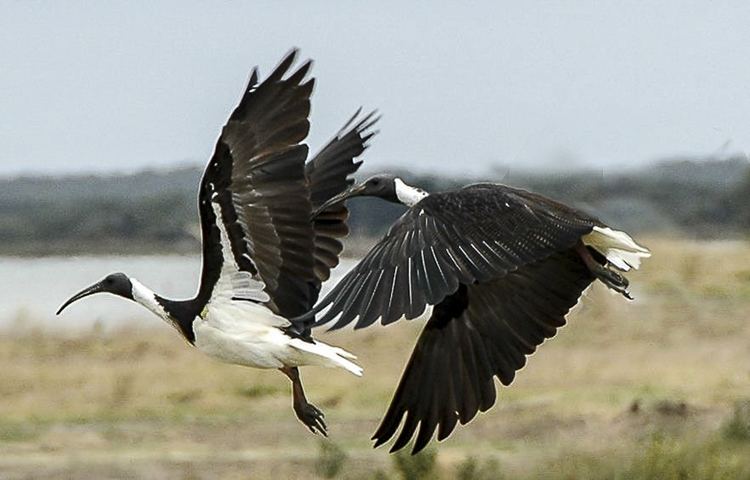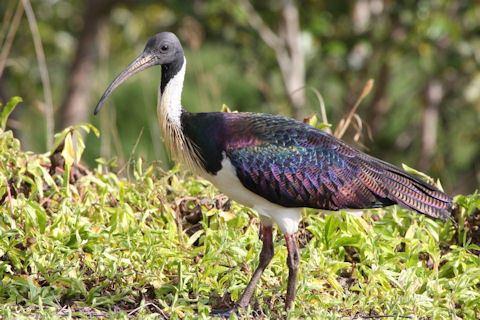Phylum Chordata Rank Species | Scientific name Threskiornis spinicollis Higher classification Threskiornis | |
 | ||
Similar | ||
Straw necked ibis flock in habitat queensland australia
The straw-necked ibis (Threskiornis spinicollis) is a bird of the ibis and spoonbill family Threskiornithidae. It can be found throughout Australia, New Guinea, and parts of Indonesia. Adults have distinctive straw-like feathers on their neck.
Contents
- Straw necked ibis flock in habitat queensland australia
- Straw necked ibis threskiornis spinicollis
- Description
- Distribution and habitat
- Feeding
- Breeding
- References

Straw necked ibis threskiornis spinicollis
Description

Straw-necked ibises are large birds, around 60–75 cm (23.5–29.5 in) long. They have dark wings that show an iridescent, multicoloured sheen in sunlight, and have a dark back and collar. Most of the neck is white, as are the underparts and undertail. They have a long, black, downcurved bill, and their legs are usually red near the top and dark grey toward the feet. Straw-like feathers on the neck of adults give the bird its common name.

Sexes are similar, although males have longer bills and females have a dark band across their upper breast. Juveniles have duller colors and shorter bills with less curvature, and lack the straw-like plumes on the neck.
Distribution and habitat

Straw-necked ibises are found throughout Australia, except parts of Western Australia, South Australia, and south-west Tasmania. They are most abundant on the east coast, and also inhabit Norfolk Island and Lord Howe Island. They are also found in Indonesia and New Guinea. Found around shallow freshwater wetlands, cultivated pastures, edges of swamps and lagoons, and wet or dry grasslands. They tend to avoid arid and saltwater areas, and coastal mudflats. They are extremely nomadic, and are constantly on the move searching for suitable habitats. They are frequently seen standing on high branches of bare trees, silhouetted against the sky.
Feeding

Straw-necked ibises have not adapted to the wide variety of food that Australian white ibises now survive on. In shallow waters, straw-necked ibises feed on aquatic insects, molluscs, frogs, and food sifted from the surface of the water body. On land, they thrive on grasshoppers, crickets, and locusts, and are often called the Farmer's Friend because they feed on pests that would otherwise eat farm crops. They also eat small lizards, skinks, and other small reptiles.
Breeding
They build a large, rough, cup-shaped nest of sticks and trampled plants among reeds, paperbarks, bulrushes, or trees over water. They build in colonies, often with the Australian white ibis. Breeding season may be around March in the north, and July–December in the south, but can occur throughout the year after heavy rain in some areas. Nests are used year after year.
